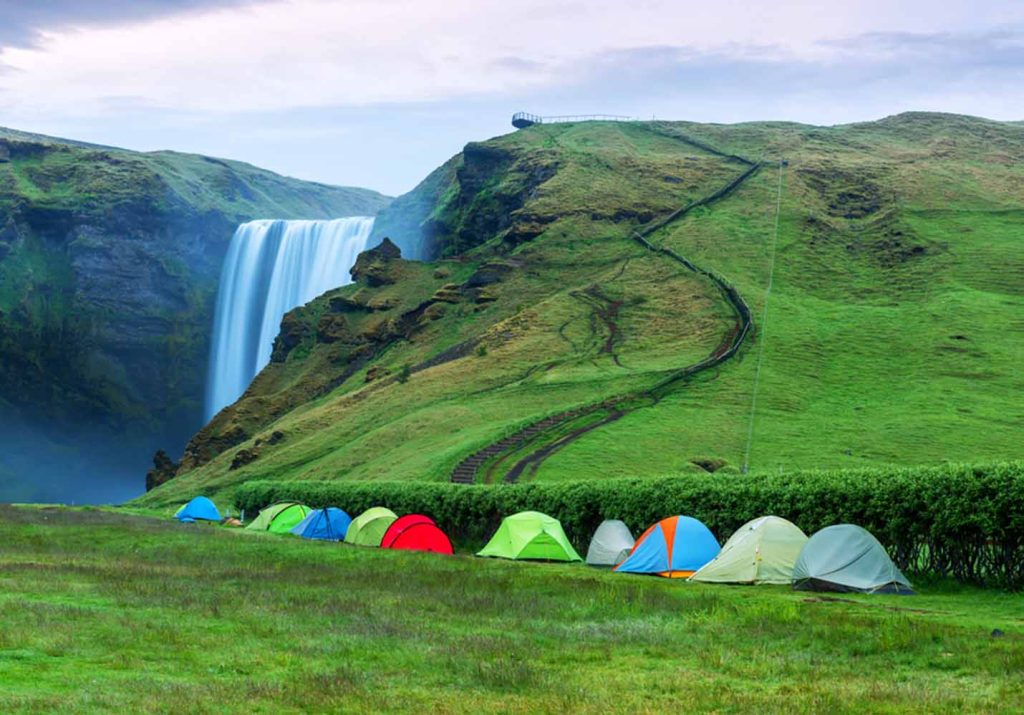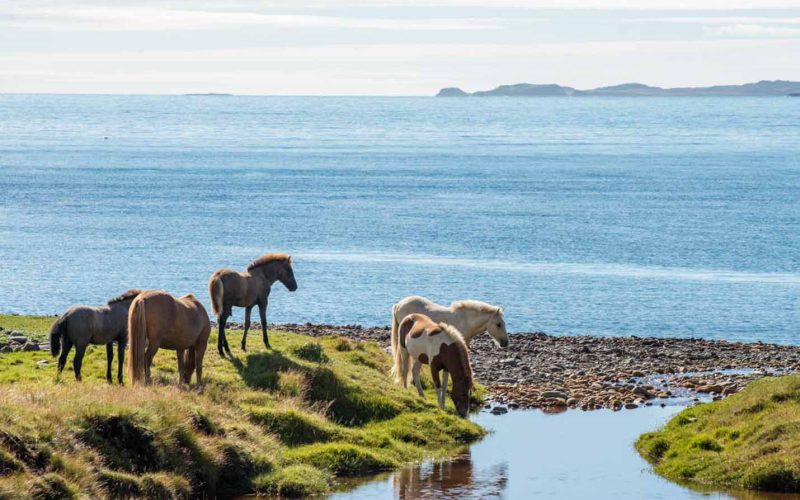How to Save Money While Traveling in Iceland: Practical Tips and Suggestions
Iceland is one of the most breathtaking and unique destinations in the world, known for its dramatic landscapes, stunning waterfalls, glaciers, and volcanic activity. However, it’s also known for being quite expensive, with high prices for food, accommodation, and tours. But fear not! There are plenty of ways to enjoy this spectacular country without breaking the bank. Whether you’re a solo traveler, a couple, or a group, here are some practical tips and suggestions on how to save money while exploring Iceland.
1. Plan Your Trip Around Budget-Friendly Accommodation Options
Accommodation in Iceland can be one of the biggest expenses. Hotels in major cities like Reykjavik can be pricey, especially during peak seasons. However, there are several ways to save on lodging:
a) Hostels and Guesthouses
Iceland has an excellent network of hostels and guesthouses, particularly in Reykjavik and other major towns. These budget-friendly options provide a comfortable place to rest at a fraction of the cost of hotels. Many hostels offer private rooms as well as dormitory-style accommodations, so you can choose based on your budget and comfort preferences.
b) Camping
If you’re visiting during milder weather, camping is a fantastic option. Iceland has a wide range of campsites throughout the country, and many are located in stunning locations near hot springs, lakes, and glaciers. Renting camping equipment (such as tents, sleeping bags, and cooking gear) is relatively inexpensive, and it allows you to explore the country at your own pace.

c) Airbnb
Airbnb is another excellent alternative for travelers looking to find affordable accommodation in Iceland. Whether you’re traveling solo, as a couple, or with a group, Airbnb offers a wide range of options to suit different budgets and preferences. You can choose from entire homes, private rooms, or even shared spaces, making it a flexible option for any type of traveler. One of the main benefits of using Airbnb is the ability to book cozy apartments or rooms in Reykjavik and other towns at prices significantly lower than traditional hotels. This is especially helpful in high-demand areas, where hotels can be very expensive.
In addition to the cost savings, staying in an Airbnb often provides a more authentic experience. Many hosts live in the homes they rent out, and you might get a chance to learn more about Icelandic culture and lifestyle from them. You can also enjoy the convenience of having your own kitchen, allowing you to save on meals by cooking at home. Additionally, Airbnb accommodations are often located in more residential areas, giving you a more local feel of the city or town you’re staying in, rather than being surrounded by tourists. This can make for a much more enriching and memorable experience.
2. Rent a Car Instead of Booking Expensive Tours
One of the most expensive aspects of an Iceland trip is guided tours. While tours are convenient, they can quickly add up, especially if you plan on visiting popular spots like the Golden Circle or the Blue Lagoon. To save money, consider renting a car and exploring Iceland at your own pace.
a) Self-Drive Tours
Iceland is one of the safest countries for road trips, and renting a car gives you the flexibility to create your own itinerary. By driving, you can visit lesser-known attractions, stop whenever you want, and avoid the expensive prices of guided tours. Many of the country’s most famous sights, such as the Golden Circle, the South Coast, and the Snæfellsnes Peninsula, are easily accessible by car.
b) Share Rental Costs
If you’re traveling with friends or fellow travelers, consider renting a larger vehicle, such as a minivan or a 4×4, and splitting the cost. This can significantly reduce your per-person expenses and give you more space to stretch out during the long drives.
c) Look for Car Rental Deals
Make sure to book your rental car well in advance and compare prices across different rental companies. Sometimes you can find special deals or discounts, especially if you book directly with the rental agency. Additionally, consider renting a car with basic insurance coverage to avoid extra fees.
3. Save on Food: Eat Like a Local
Iceland is renowned for its fresh, high-quality food, with a focus on locally sourced ingredients like fish, lamb, and dairy. However, eating out at restaurants daily can be quite expensive, especially in tourist-heavy areas like Reykjavik. To save money while still enjoying the country’s culinary delights, it’s essential to be strategic with your food choices.
One of the best ways to cut food costs is by shopping at grocery stores and preparing your own meals. Iceland has several budget-friendly supermarkets such as Bonus, Krónan, and Netto, where you can find everything you need to cook simple meals. Stocking up on items like pasta, rice, canned goods, and vegetables can save you a lot compared to dining at restaurants. Many hostels, guesthouses, and campsites also offer kitchen facilities, allowing you to cook your own meals during your stay.
If you don’t want to cook, consider grabbing a quick bite at local food stalls or street food vendors, which offer traditional Icelandic dishes at more affordable prices. Hot dogs, a popular Icelandic snack, are an excellent option for a cheap and filling meal.
a) Grocery Stores
One of the easiest ways to save money is by cooking your own meals. Iceland has several large grocery store chains, such as Bonus, Krónan, and Netto, that offer affordable options for travelers. Stock up on basics like pasta, rice, bread, eggs, and vegetables, and prepare simple meals in your accommodation’s kitchen or campsite. You can also buy ready-to-eat meals, which are cheaper than dining out.
b) Street Food and Local Snacks
If cooking isn’t an option, try local street food. Iceland offers several affordable and tasty street food options, such as hot dogs from Bæjarins Beztu Pylsur, a famous hot dog stand in Reykjavik, or skyr (a type of Icelandic yogurt). These quick bites are cheap and will keep you full without breaking your budget.

c) Avoid Tourist Traps
Restaurants located near tourist attractions tend to be overpriced, so it’s best to avoid dining at places that cater primarily to tourists. Instead, seek out local cafés and restaurants where the prices are more reasonable. Reykjavik has many hidden gems where you can enjoy authentic Icelandic food without paying premium prices.
4. Take Advantage of Free Natural Wonders
Iceland’s natural beauty is its biggest draw, and the best part is that many of the country’s most spectacular sights are completely free to visit. While guided tours and entrance fees to attractions like spas and museums can add up, there are countless outdoor activities and locations that require no payment at all.
a) Hiking
Iceland is a hiker’s paradise, and most trails are completely free to access. Some of the best hikes include the Fimmvörðuháls trail, which takes you between two glaciers, and the hikes in Thingvellir National Park, where you can explore the rift valley between the Eurasian and North American tectonic plates. Be sure to check local maps and trail conditions before you head out.
b) Hot Springs and Waterfalls
While the Blue Lagoon and other geothermal spas can be quite pricey, Iceland is home to many free hot springs, such as the Secret Lagoon in Flúðir or the natural hot pots near Reykjadalur. Waterfalls like Gullfoss, Seljalandsfoss, and Skogafoss are all free to visit and offer incredible photo opportunities.
5. Use Free Wi-Fi and Avoid Roaming Charges
Staying connected while traveling abroad can get expensive, especially with international roaming charges. Iceland has great Wi-Fi coverage, with free Wi-Fi available in most cafes, restaurants, and even some public transportation options. Avoid expensive roaming fees by relying on free Wi-Fi when possible, and consider purchasing a local SIM card with data if you need constant access.
6. Look for Discounts and Passes
If you plan on visiting several attractions in a specific region, keep an eye out for discount passes that can save you money. The Reykjavik City Card, for example, offers free access to museums, public transportation, and discounts at restaurants and shops in the capital. Similarly, there are regional passes that offer savings on multiple attractions and tours.
7. Travel with a Group
Traveling solo in Iceland can be expensive, but if you can find others to join you, costs can be reduced significantly. Group travel allows you to split accommodation, car rental, and even food costs. Many hostels and guesthouses offer group rates, and you can even organize a self-guided tour with friends, which can be cheaper than booking a guided one.
Iceland’s natural wonders are truly one of a kind, and with a little planning and flexibility, you can experience all that this beautiful country has to offer without spending a fortune. By choosing budget-friendly accommodations, cooking your own meals, exploring at your own pace, and taking advantage of free attractions, you’ll be able to have an unforgettable adventure while keeping your expenses in check. With these tips in hand, you’re ready to embark on your Icelandic adventure, without breaking the bank.
Happy travels, and remember: sometimes the best memories are made when you find the beauty in simplicity and the unexpected!
